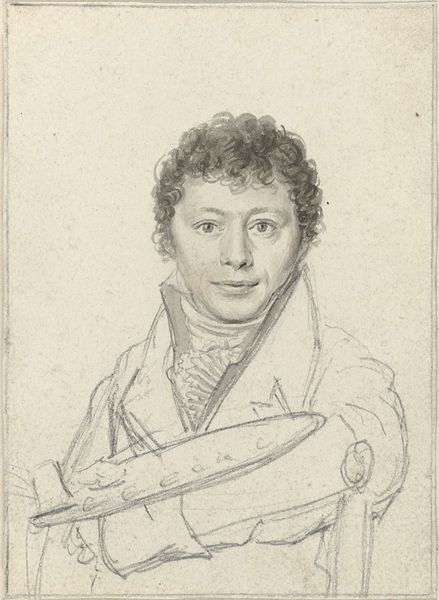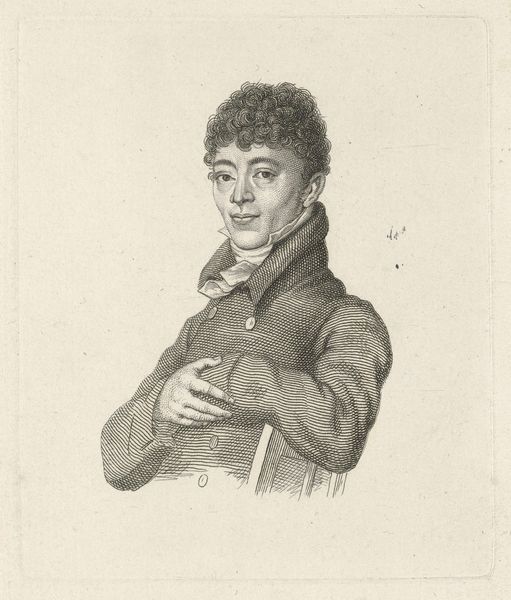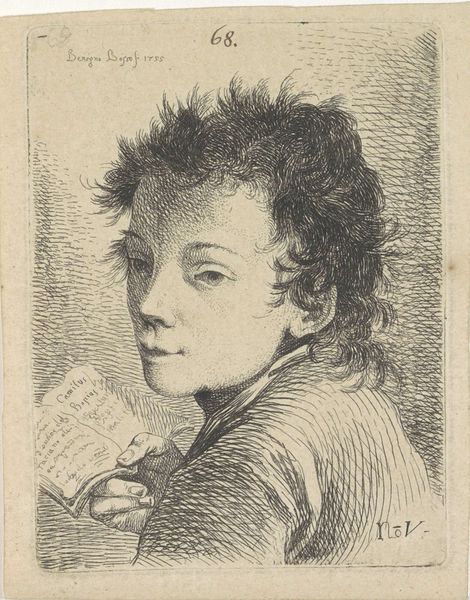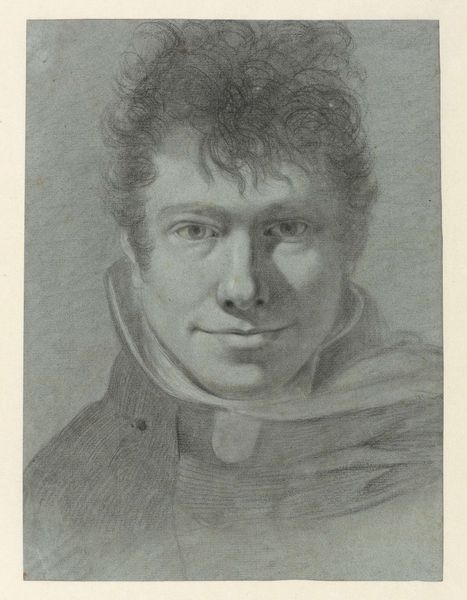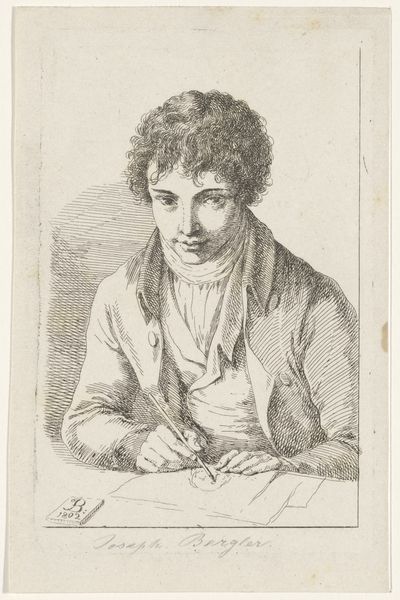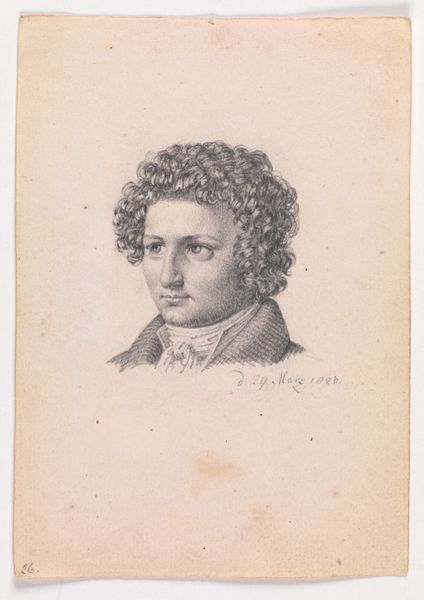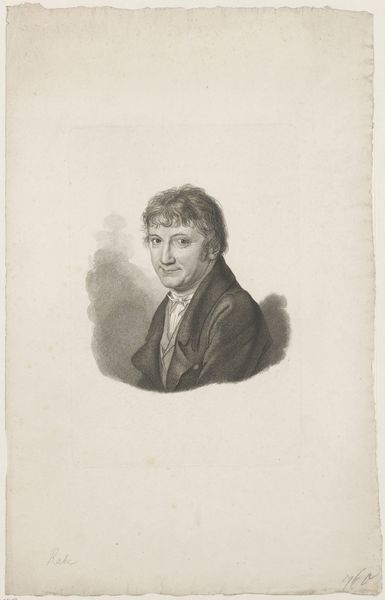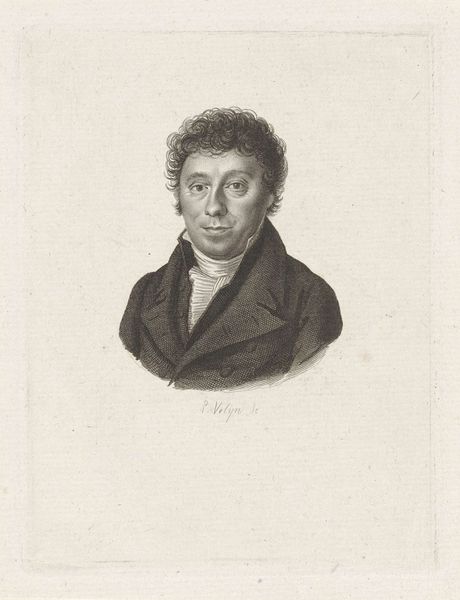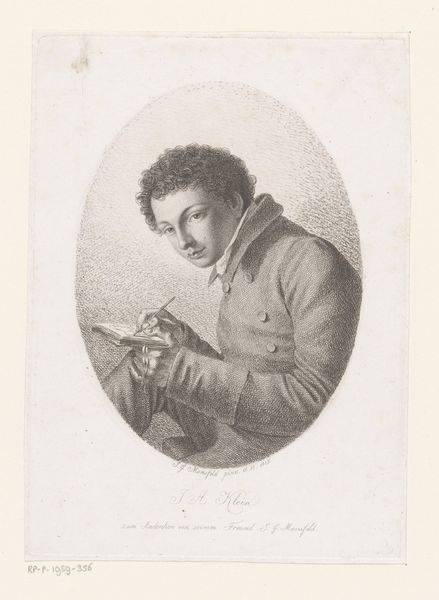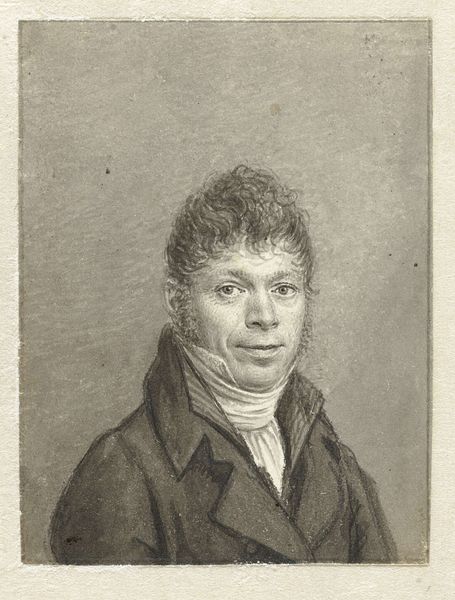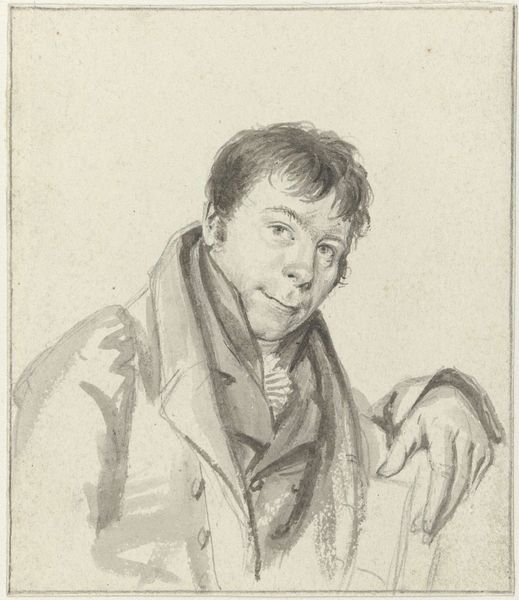
engraving
#
portrait
#
neoclacissism
#
old engraving style
#
portrait reference
#
history-painting
#
engraving
Dimensions: height mm, width mm
Copyright: Rijks Museum: Open Domain
Curator: Here we have Jacob Ernst Marcus’s 1811 engraving, "Portret G.J. Michaelis," residing at the Rijksmuseum. I'm struck immediately by the stark clarity of the lines, the careful hatching. There’s a real elegance to it, wouldn’t you say? Editor: It feels almost industrial. The subject, palette in hand, becomes almost an artisan producing commodities, which might resonate with the shift of artist's production to mass-produced works. The lines are so precise; they give it a somewhat alienating effect. Curator: Interesting take! I find that precision heightens the sense of detail, typical of neoclassical portraiture. Note how the hatching not only models form but creates distinct tonal values, adding a remarkable depth, as does the way the eye follows his direct gaze to the composition's apex: the subject’s soft curls. Editor: I am curious about the engraver's studio space—were there standardized sizes of copper plates? Was he perhaps using ready-made tools, things not custom-made but purchased from the factory? The very essence of engraving, a reproducible image, invites exploration into the printmaking practice itself, something we don't often consider. Curator: True enough. This focus does align well with the ideals of Neoclassicism—the revival of classical forms through exacting artistic and mechanical precision and its visual order! Think of the Enlightenment's fascination with reason and clarity. The artist, following Marcus' lead, used these linear means to define his likeness during a particular era and artistic movement. Editor: It's more than a face; it represents the era’s own technological capacity and standardization of production and even consumption, beyond simple questions of likeness. His steady hand could be replicated mechanically to make copies... Curator: But to dismiss it as *just* a representation of technology overlooks the sensitivity in capturing Michaelis' features, and the skillful handling of line that creates light and shadow. The engraver elevates it beyond mere technical skill. Editor: Agreed. Seeing it, though, compels a consideration of the craft itself: the relationship between labor, materials, and even consumer culture that the artwork comes into, challenging, as it does, those arbitrary separations. I leave appreciating its complexities all the more. Curator: Absolutely! Through line and tone, we begin to perceive how “Portret G.J. Michaelis” captures something unique even through replication, not only reflecting its subject but also engaging broader artistic and philosophical currents.
Comments
No comments
Be the first to comment and join the conversation on the ultimate creative platform.
